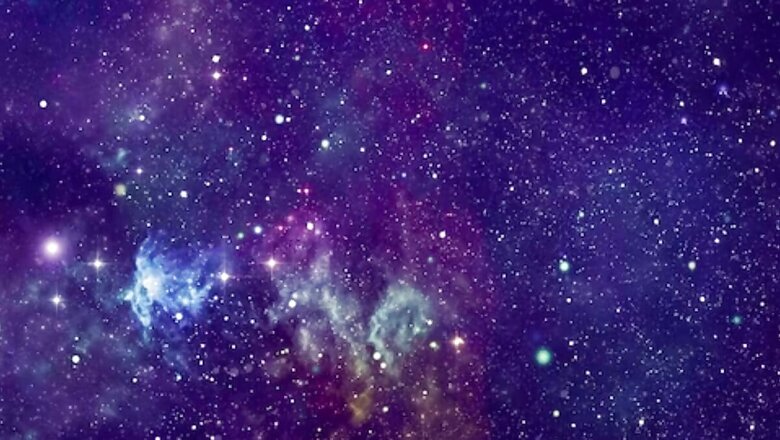
views
The earliest building blocks of the Milky Way galaxy have been identified from 12-13 billion years ago, which is very close in time to when the universe’s first galaxies started to form, according to new research. Naming these groups of stars ‘Shakti’ and ‘Shiva’, astronomers said the findings are the equivalent of “finding traces of an initial settlement that grew into a large present-day city”.
The researchers claimed that smaller galaxies merged to form the Milky Way, creating fairly large building blocks in the process.
When galaxies collide and their stellar populations mingle, most of the stars retain very basic properties, directly linked to the speed and direction of their origin galaxy, they explained. In this study published in The Astrophysical Journal, the research team from Max Planck Institute for Astronomy, Germany, analysed stellar datasets and found that stars from the merging galaxies were crowded around two specific signatures of energy and angular momentum, or the rate at which a spinning object’s rotating speed changes. Two different star groups were thus formed — ‘Shakti’ and ‘Shiva’.
The study’s co-author, Khyati Malhan, dubbed these two formations Shakti and Shiva, the latter being one of Hinduism’s primary deities and the former a female cosmic force frequently depicted as Shiva’s consort.
The like-minded stars from two distinct galaxies that formed Shakti and Shiva were found to have a higher angular momentum than the stars in the center of the Milky Way.
The scientists reported that the greater angular momentum seen was compatible with the star groups that had been part of distinct galaxies merging into the Milky Way. Furthermore, the low metal concentration of each of these stars indicated that they had formed a long time ago.
Stars formed recently contain more of heavier metallic elements, they explained. Therefore, their energy and angular momentum, along with low metallic content, comparable with that of the stars at the heart of the Milky Way, makes ‘Shakti’ and ‘Shiva’ good candidates for some of the earliest ancestors of our Milky Way, the researchers said.
“Shakti and Shiva represent two of those early, massive progenitors that coalesced at high redshift – perhaps 12 gigayears ago – perhaps the last event from the protogalaxy before disk formation commenced,” they wrote in their study.
A gigayear has a billion years. Shakti and Shiva might be the first two additions to the heart of the Milky Way, initiating its growth towards a large galaxy, said study co-author Hans-Walter Rix from Max Planck Institute for Astronomy.
For their analysis, the researchers used the data provided by the European Space Agency’s Gaia satellite and combined it with the stellar datasets from the US Sloan Digital Sky Survey, having detailed information about the star’s chemical composition.
Launched in 2013, Gaia’s dataset now includes positions, changes in the positions, and distances for almost 1.5 billion stars within our galaxy, providing an ideal dataset for this kind of “big data galactic archeology”, the team said.
(with PTI inputs)

















Comments
0 comment